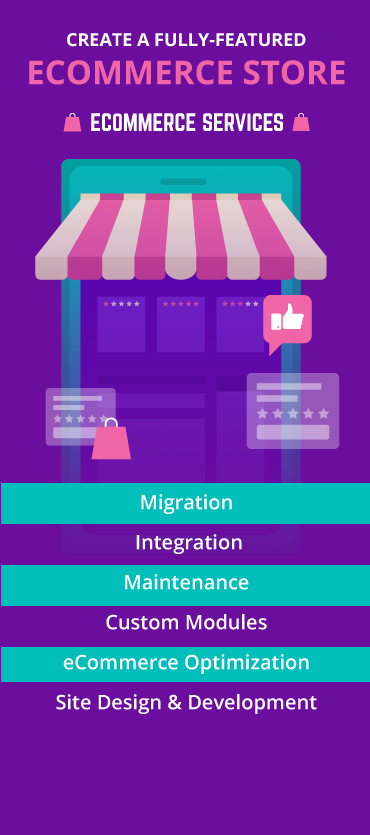With a whopping 60%[i] of consumers preferring mobile shopping applications over websites, there is no doubt that your target audience will have at least one shopping app on their mobile devices.
Mobile commerce enables shoppers to buy and sell goods and services from anywhere using devices like smartphones or tablets.
M-commerce sales are projected to increase by $510 Billion in 2023 and $710[ii] Billion in 2025. With a wide array of features, mobile commerce empowers businesses of all shapes and sizes to scale operations, expand reach to customers, and convert better. It caters to:
- Mobile money transfers
- In-app purchases
- Mobile ticketing
- Location-based services
- Mobile marketing, etc.
With M-commerce evolving at a lightning-fast speed, it’s essential for businesses to stay updated with mobile shopping trends, implement them, and boost revenue.
Let’s take a look at some M-Commerce Trends that will transform the eCommerce industry.
6 Mobile Commerce Trends to Watch Out for in 2023
Mobile commerce empowers online businesses to establish a better connection with customers by devising future-centric strategies. Let’s deep dive into seven mobile commerce trends.

1. Ultra Responsive Mobile Apps/Sites
Today’s customers expect smooth digital experiences. Factors like Inefficient UI/UX, increased page load time, etc., can hamper the overall customer experience. Moreover, Google has shifted to mobile-first indexing, even if the searcher loads a website on a desktop.
Therefore, to stand out with your M-commerce experience:
- Prioritize mobile-friendly designs with large buttons that cater to big fingers
- Use full-screen images to showcase the products in the best light
- Include hamburger icons to toggle between the page content and the navigation bar
- Add push notifications to keep users updated about significant updates, discounts, or changes in their user experience
2. One-Click Ordering
When a customer is asked to re-enter the basic details at the checkout process, like credit card numbers or shipping details, they often head for the exit button.
However, to encourage your shoppers to complete their purchases, you must introduce one-tap checkout, presenting mobile-first payment options, like Apple Pay, GPay, etc.
This trend will accelerate mobile conversions by reducing the total purchase steps and help deliver a personalized mobile checkout experience by serving customers with their preferred payment methods.
3. Retail Mobile Apps
Mobile shoppers are drawn toward better user experience. Instead of using e-Commerce sites that may be optimized for mobile browsers, they prefer to use retail apps that are specifically built for smartphone screens.
So, you must launch a retail app for your business to increase product/brand awareness, sales, and digital experience.
4. Augmented Reality (AR)
Who wouldn’t prefer an interactive shopping experience? AR has come a long way and is accessible to most medium-sized and large e-Commerce businesses.
You can incorporate its advanced technologies, like the virtual fitting room or Apple ARKit into your retail app or website. These technologies will make the customers virtually experience how a product will look on them (clothes) or in their living room (furniture).
AR trends will enable your business to combat high return rates and provide a fun and immersive M-commerce shopping customer experience.
5. Voice Search
Now, voice search has become a crucial component of the M-commerce market. Shoppers use it to add products to their cart, track packages, contact support, provide feedback, or reorder certain items.
So, you can aim to make your mobile apps or websites voice-search-friendly by optimizing the product detail pages, FAQs section, etc. It will speed up the purchase process and enable an exceptional customer experience.
6. Metaverse
Metaverse – the alternate virtual world, is the new buzzword being preferred by various customers to purchase virtual products from their favorite brands.
You can leverage this medium to:
- Create a new product line of experiential retail
- Organize live-stream concerts
- Introduce non-fungible tokens or NFTs
- Encourage customers to purchase metaverse items through cryptocurrency
This will boost interactivity with your customers, creating a unique shopping experience.
How To Optimize Mobile Commerce?
By optimizing M-commerce, businesses can improve their mobile commerce performance, attract more customers, and ultimately increase revenue & profits. It can be done by implementing strategies like:
- Creating a mobile-friendly app
- Advancing page loading speed
- Using mobile-friendly payment options
- Leveraging mobile analytics
- Offering personalized experience
- Investing in mobile marketing, and more.
Optimizing mobile commerce can be a tricky task. But when done with utmost precision and planning, it can enable you to meet your customer’s expectations and deliver a memorable shopping experience.
Wish to Optimize Your Mobile Commerce App or Website? Talk to Us!
Frequently Asked Questions on Mobile Commerce
Ques. What are the factors that influence the success of M-commerce?
Ans. The major factors responsible for the success of mobile commerce are legal support, IT infrastructure, and user education.
Ques. What are the key components of mobile commerce?
Ans. The critical components in M-commerce are mobile commerce applications, mobile stations, mobile middleware, wireless networks, and host computers.
Ques. What is the lifecycle of mobile commerce?
Ans. The mobile commerce lifecycle mainly includes four states: awareness, purchase, post-purchase, and retention.
Ques. How can a business implement mobile commerce?
Ans. A business can implement M-commerce with the following steps:
- Use mobile-friendly app design
- Increase your mobile website speed
- Make your product presentation customer-friendly
- Optimize the mobile app’s checkout flow
- Implement omnichannel marketing
- Test your mobile online store
- Develop a unique mobile commerce app
Ques. What are the ways of building an M-commerce store?
Ans. The two common ways of building a mobile commerce app are:
- Using e-Commerce builders like Shopify, WooCommerce, etc.
- Creating a fully-custom application using a range of languages and technologies, like Ruby, Node.JS, etc.
References
[i] & [ii] https://www.tidio.com/blog/mobile-commerce-statistics/











